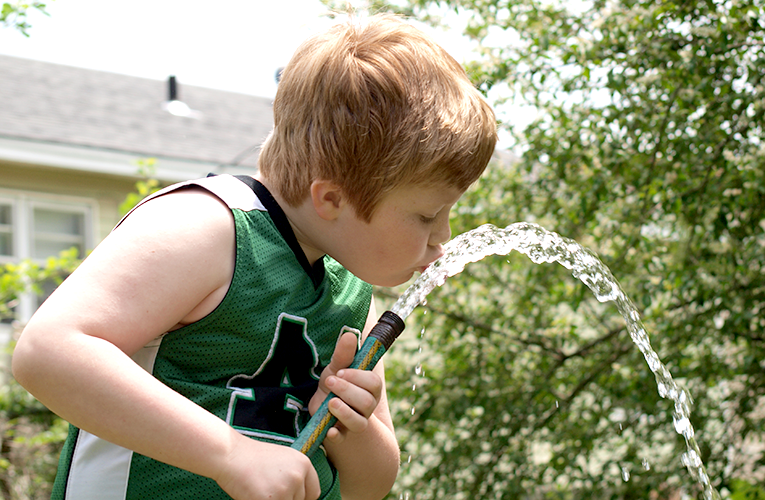Twenty-four times a year I spend upwards of two hours with a needle in my arm donating platelets at what is now the Red Cross blood bank on March Lane in Stockton..
As required by state law, I spend 15 minutes in the canteen.
And before COVID changed the world, I ask for tap water.
The canteen volunteer will inadvertently grab bottled water. When I say I want tap water instead, they give me a quizzical look and then get me tap water.
If you ever have had white blood cells taken and the plasma returned, you can understand why the last thing you’d want is water that has been refrigerated.
Being cold aside, I really do prefer tap water, although I will occasionally drink bottled water.
Every once in a while, someone will ask why I prefer tap water given from their perspective bottled water tastes better and is safer.
Given that bottled water typically comes from a municipal water system such as Safeway, water that is bottled in Merced and sits in storage for a long time in bottles made from chemicals, I don’t see the big advantage in safety.
The government has determined pipes used for water delivery in our cities and homes as well as the polyethylene terephthalate used to make disposable water bottles are safe.
As for the taste, that’s a judgment call, even if most people arguably have been influence by marketing from the $12 billion annual bottled water industry.
I can honestly say I’ve drank some fairly bad-tasting bottled water after sipping from a bottle that had been opened and then allowed to sit for a while in a hot car.
As for tap water, if you fill up a glass bottle — shake it first or put it in the refrigerator for a period without a lid — the chlorine that causes the questionable taste for some dissipates.
The vast majority of bottled water that is consumed comes from municipal sources where treatment employs chorine that is a key redundancy in keeping tap water safe.
The big difference is the chlorine has been agitated out.
About 23 years ago when Carlon Perry was serving on the Manteca City Council, he shared complaints from residents with municipal staff about foul-tasting tap water that he also said he experienced.
Staff could find no cause except to indicate it may have been over chlorinated at the well head treatment plant, or aging pipes could be the problem.
Simple solutions were offered for both: Agitate tap water, or let is sit before drinking so the chlorine gases would dissipate. Or run water for a few seconds if there are pipe issues.
Carlon and five other people agreed to a blind-taste test of municipal and bottle water (obtained from Windmill Express).
Three said they drank only bottled water and three said they predominately drank tap water. The results surprised Carlon — and two other participants.
Carlon preferred the tap water, as did another tester that swore by bottle water. A participant that preferred tap water for its taste said the bottled water was better in the blind-taste test.
There are those who tout bottled water being safer than what flows from your tap in Manteca, Turlock, Modesto, Ripon, Stockton, Lathrop and other cities.
It’s not true, as all municipal water must meet higher federal standards than bottled water.
Bottled water is, however, a lot more expensive. Even using conservative calculations, you are paying on average $1 for a 16.9-ounce water bottle, or more than 1,000 times what you’d pay to fill the same water from the tap.
What brought up water safety and taste of bottled versus tap was a decision Tuesday I made to drink water from — horror of horrors — the garden hose while I was watering sone plants.
A few summers back when I drank from a garden house, a neighbor that was walking by was stunned I was doing so because of possible health issues.
She told me how bad of an idea it was to drink water from a garden hose, adding that it could make me sick and implying it could also kill me if I did it enough.
I guess that makes me a dead man walking.
Although my drinking from a garden hose is few and far between these days, it was how I got almost all of my drinking water when playing outside in the summer in my youth.
I confess, however, to several times a week sticking my head under a sink water faucet and chugging water without a glass.
Research drinking from a garden hose on the Internet, and you will get the impression that I’m lucky to be alive, as well as countless other millions of kids that made it to adulthood without dying because they drank water from a garden hose.
The Internet will tell you most garden hoses are made of a toxic elixir of chemicals, unless otherwise noted by the manufacturer. They also note young children are more susceptible to illnesses such as lead poisoning. Many garden hoses have lead.
The real issue, however, is exposure time and quantity. You’d have to do more than take a swig every day or so from a garden hose and do so for years for issues of any consequence to develop. The Chicken Little websites don’t tell you this, or else they bury it.
Drinking water from a garden hose occasionally on a sizzling day has now morphed into being as crazy of an act in some quarters than mainlining meth.
The reality is unless you make it a 365-day habit and are a 20-pound kid, you are not going to get sick or die.
This column is the opinion of editor, Dennis Wyatt, and does not necessarily represent the opinions of The Bulletin or 209 Multimedia. He can be reached at dwyatt@mantecabulletin.com





